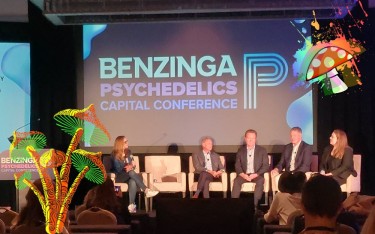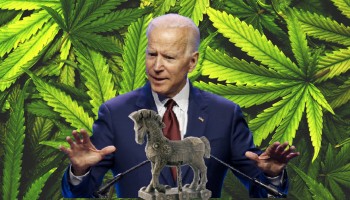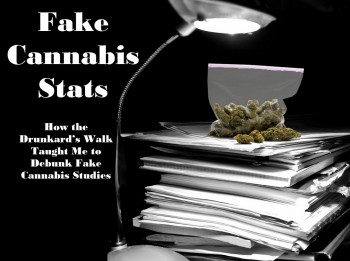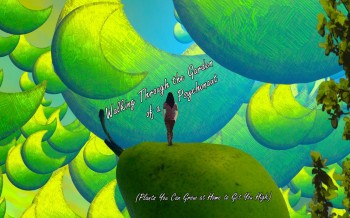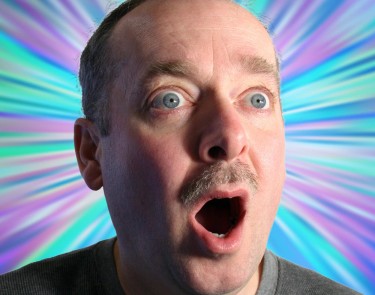
Understanding How The Entourage Effect Works In Psychedelic Mushrooms
Learn fascinating ways about how magic mushrooms work!
Most of us are already familiar with the entourage effect in marijuana. In essence, the entourage effect means that the therapeutic compounds in cannabis work more efficiently with one another, synergistically, to provide health benefits that are more powerful compared to when we take compounds on its own. While there are cannabis products that isolate THC and CBD, the science tells us that taking flower or full-spectrum form, where other cannabinoids and terpenes are present, are much more effective than one compound on its own.
The concept of the entourage effect was discovered in 1999 by none other than Raphael Mechoulam, the famous godfather of THC. Up until recently, most of what we know about the entourage effect has been limited to cannabis plants.
Now, there’s new data suggesting that the same can be observed when medicating with psychedelic mushrooms.
After all, psilocybin mushrooms – just like marijuana – also contain a complex array of other compounds, not just the star compound they are known for. While we do have some knowledge of how psilocybin works in the body thanks to clinical tests, keep in mind they do make use of synthesized psilocybin for research most of the time.
According to a recent study, psilocybin extracts may have more powerful health benefits for treating depression, OCD, anxiety, and PTSD to name a few because of the other psychoactive as well as non-psychoactive compounds in the mushroom. “My colleagues and I are very interested in the potential of psychedelics to treat serious, treatment resistant psychiatric disorders such as depression, PTSD, OCD and even schizophrenia,” explains Bernard Lerer, study author and a psychiatry professor and director at the Hadassah BrainLabs Center for Psychedelic Research at Hebrew University.
“There are many anecdotal and clinical reports which suggest that extract of psilocybin-containing mushrooms may have unique effects that are qualitatively and quantitatively different from chemical psilocybin, and also some preclinical studies. This observation has important clinical implications and we wanted to test it empirically in a laboratory study,” they said. So for the study, the researchers compared naturally-derived mushroom extracts to chemically made psilocybin, with the intention of discovering whether the other compounds within the extract can provide benefits that are not found when consuming isolated psilocybin.
The researchers utilized male adult mice for the trials; they were divided into groups: some were given the naturally occurring mushroom extracts, while the others were given the synthetic psilocybin. Meanwhile, others were given a control solution made of saline. Additionally, the researchers analyzed the heat twitch response (HTR) assay, which is a reputable method for analyzing the impacts of psychedelics on mice. Furthermore, the researchers analyzed the mice in a molecular and biochemical level to understand any synaptic protein expressions within the brain, which are features of neuroplasticity.
The results were astonishing: they found that the brains of the mice who were given the naturally occurring mushroom extracts showed more significant neuroplasticity markers through the presence of synaptic proteins, specifically GAP43, SV2A, PSD95, and synaptophysin. Since these proteins are required for development, synaptic growth, and neuroplasticity, these findings suggest that naturally occurring mushroom extracts may indeed have a more powerful impact compared to psilocybin isolate.
“Our findings need to be confirmed in human studies but they do suggest that there may be therapeutic advantages to psilocybin-containing mushroom extract over chemically synthesized psilocybin, when both are administered at the same psilocybin dose,” explains Lerer to Psypost.
So Much We Need To Uncover In The World Of Mushrooms
When magic mushrooms are cultivated and extracted naturally, the sub metabolites of the plant remain intact, unlike the isolated versions that are synthetically produced in a laboratory since it only contains psilocybin. There are several examples, such as the Baeocystin tryptamine, which can induce mild hallucinogenic effects. Beta-carbolines have also been discovered in psychedelic mushrooms, which can effectively help metabolize psilocin in the human body, causing a more intensive psychedelic experience.
But Why Is It Harder To Study Mushrooms Compared To Marijuana?
While the entourage effect of cannabis is already widely studied and better understood, the opposite is true when it comes to psychedelic mushrooms. There’s still so much we need to understand and study better; rodent studies are a start but translating them to humans is a whole other ball game. In addition, other experts have already acknowledged the challenges of identifying such impacts of the entourage effect.
For instance, Alan Rockefeller, a renowned mycologist who specializes in DNA sequencing as well as photography of fungi, tells Psychedelic Health: “No one really knows whether the entourage effect occurs with mushrooms.”
He goes on to elaborate the difficulties associated with studying mushrooms: “It is difficult to study because the same batch of mushrooms will have different effects in different people, and the same person on different days,” Rockefeller said. Also, it’s difficult to understand which compounds are active in a plant or mushroom, and how large the impact is for the active compounds. Researchers also need to understand the concentrations of each compound, and how different growing environments or processing can impact it.
“There are a dozen different tryptamines that can occur in mushrooms, plus a few beta-carbolines and hundreds of other molecules – so there is probably more than just psilocybin having an effect,” Rockefeller said. “Studying one compound at a time is hard enough, studying mixtures of hundreds of compounds is much more difficult. Without pure compounds, it is difficult to get repeatable results,” Rockefeller said. “It is possible that the therapeutic potential is different depending on the different compounds in the mushrooms. It’s also possible that psilocybin is the only thing that matters, and the other compounds are mostly inactive,” he said.
Conclusion
There’s so much yet that we need to know about how psychedelic mushrooms work. However, the possibilities that can be brought about by harnessing the power of the entourage effect in magic mushrooms is incredibly exciting. There is so much potential in this field that we can only truly uncover with more studies.


